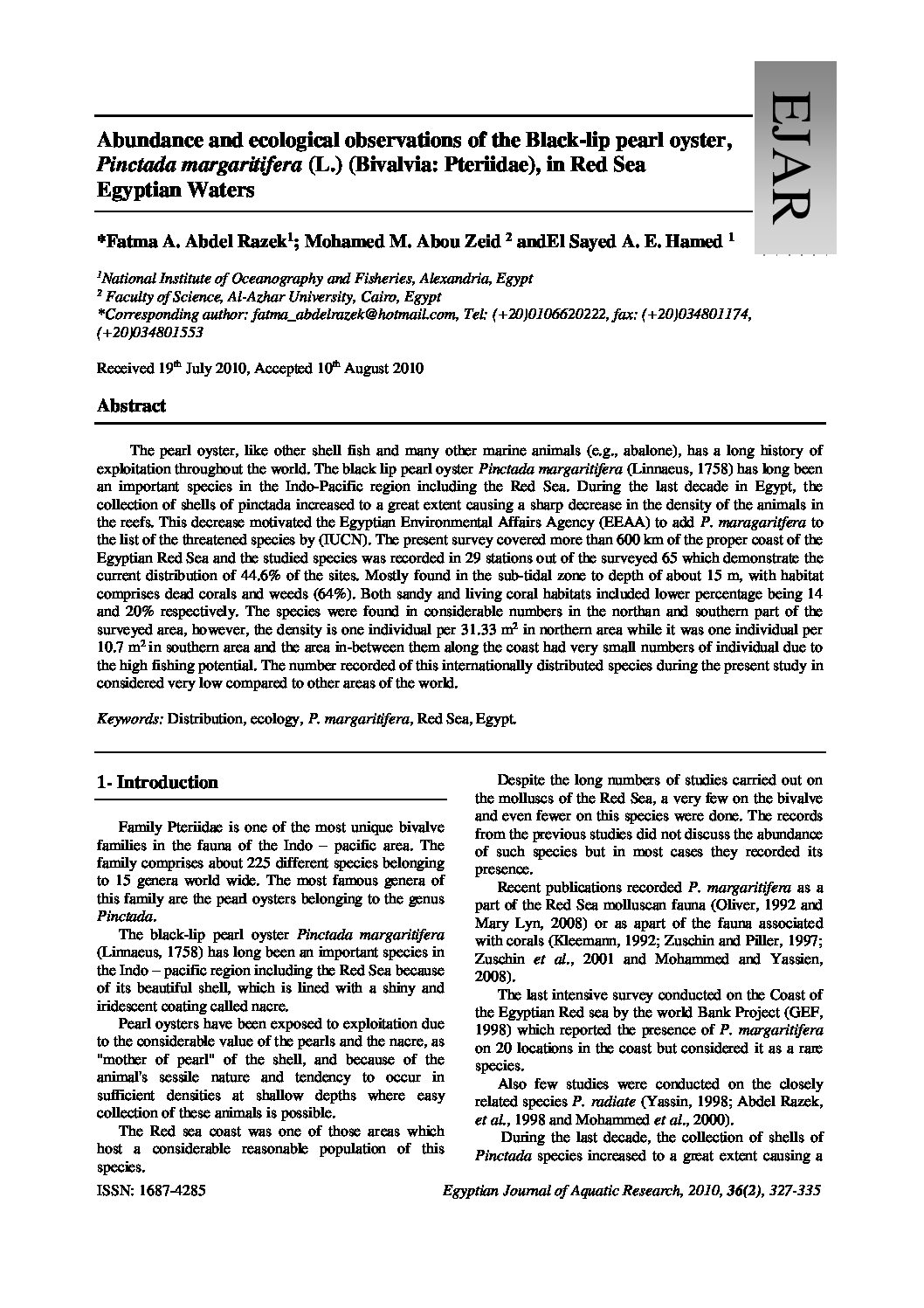Categories
vol-36Human health risk assessment associated with current Egyptian
dietary intakes of fish
M. Mourad, H. Assem, M. El-Salhia, A. Khalifa, and B. Hassan
National Institute of Oceanography & Fisheries, Alexandria-Egypt
E-mail: mhmourad 1 @ yahoo.co.uk
Received 15th September 2009, Accepted 3rd April2010
Abstract
The present study is a theoretical analysis aiming to provide a comprehensive assessment of the threats posed
by some metals contaminant of fish to human health. The available data (1990-2006) are the concentrations of
metals Cd, Pb, Hg, Zn, Cu, Fe, Mn and Ni in the edible muscle of different fish species collected from River Nile,
Lakes of Manzala, Mariut, Edku, Burollous, Bardawil, Qarun and Wadi El-Rayan. It has been found that, the levels
of Cd, Pb and Ni and are often above the maximum permissible limits according to FAO standards. In contrast, the
levels of Zn, Cu, Fe, Mn, Ni and Hg are within acceptable limits. However, exceptions in concentrations of some
metals have been recorded in some locations. The metal pollution index (MPI) of fish collected from different
Egyptian aquatic resources was 8.803. To determine if consumers are at risk from consuming fish, the dietary
exposure to metals was calculated. A comparison was carried out with the international accepted safe exposure
level. The results demonstrated that, in child group(av. Body weight 15kg ), the intake of Pb and Hg were generally
above the maximum allowable concentrations (MAC), while in youth(av. 40 kg) and adult groups(av. 70 kg) , the
intakes were safe within the limits.. Finally, the calculated Cd, Cu, Zn and Fe intakes were clearly below the safe
limit. It is concluded that, the intake of metals depends not only on the levels of metals in fish, but also on the
amount consumed.
Key words: Heavy metals; Fish; Metal pollution index; Dietary intakes; Provisional tolerable weekly intake; Egypt.







